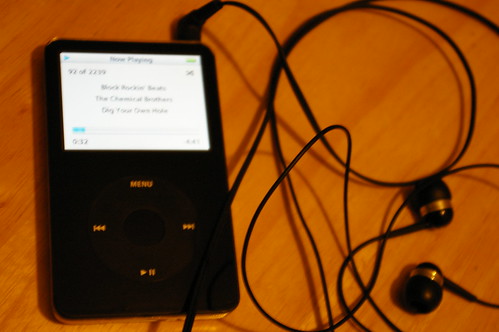Hydrokinetic adjustable wrench
“Hydrokinetic Adjustable Wrench” is a real product (and awesome) – at a conceptual level at least, really sweet piece of problem solving. The hydrokinetic adjustable wrench relies on two principles:
- Within a set range hydraulic action allows the hydrokinetic adjustable wrench to be infinitely adjustable for a perfect fit
- Once locked on, the hydraulic nature of the hydrokinetic adjustable wrench won’t give and lose the tight fit
Both of which mean that the hydrokinetic adjustable wrench should banish torn up bolt and nut heads
China
Chinese developer: Buy a house, get a wife for free – a property developer is encouraging house buyers to date his sales women – marriage brings a cash reward. It seems that it is a partnership between two challenged businesses. A dating agency in a culture that is reluctant to use its services (publicly) and housing which is screwed due to the economic climate. Finally, its hard for Chinese men to marry their significant other without their own house, due to the one-child policy
Design
Science and Tech Ads – a set on Flickr – why aren’t technology ads this cool any more?
the great sleeping bear | Spoon & Tamago
The Sound Advice Project, waveforms as bracelets – Boing Boing Gadgets – a really nice idea despite the fact that it is attached to the more conservative part of US society
9 Reasons Japanese Interactive Work Is Awesome | crackunit.com
A List Apart: Articles: The Elegance of Imperfection – wabi sabi and web design
Economics
China Journal : Ahead of the Class: Stiglitz on China’s Savings Hoard
How China sees the world | The Economist
FMCG
Japan’s skincare guru says wrinkles are beautiful too | Lifestyle | Reuters – this is way beyond the ‘progressive’ messaging of Unilever’s Dove products, but ultimately more liberating and lucrative
Charmin Sponsors ‘SitOrSquat’ Mobile App To Help Market Toilet Paper. Really. | mocoNews
Hong Kong
Hong Kong and Macau squabble | No politics, please | The Economist – Macau seems to be getting prissy with some of Hong Kong’s people.
How to
SourceForge.net: Video Monkey – for video format conversation (Mac only)
Ideas
Phone Smart – Messy Cellphone Bills Hide Real Cost – NYTimes.com – disinformation architectures : information design as a way of obscuring what you are really paying (or not paying for).
The Face To Face Reference Check
Innovation
10 Biofuels Companies You Need to Know About | The World of Startups Outside Silicon Valley | Fast Company
[Interview] What Does Future Hold for Printable Electronics? — Tech-On!
Future shock: The PC of 2019 – this feels a bit off. For starters personal computers will be still better to write or create on due to the benefits of touch-typing and keyboard short cuts – Think of a souped-up version of today’s smartphone, with a monitor that unrolls into a larger screen and a biometric security system that lets you access everything in your professional and personal life from anywhere, with all the data residing in the cloud. Wave it at your car to unlock the door. Order and pay for your morning coffee with a touch of a button. Plug it into a docking station and project that big presentation to your clients. Book a weekend getaway with just a few clicks. “PCs are going from engines or tools to portals and enablers. The vision of what they’ll be in the future is a partner. They’ll be participating in the higher cognitive tasks of what people do to get their jobs done,” says Andrew Chien, director of research at Intel Corp.
Corner Office – The Manager of Change at Xerox – Question – NYTimes.com
The Technology Chronicles : All the Web is stored on one Sun data center
Japan
What’s happening in Japan right now?: The “commons” in Japan
The Japanicity of Ken Tanaka and the Social Media Community of Youtube « The Eyeslit-Crypt
Japanese Phrases for Travelers—The phrases can be heard.
Luxury
reframing the luxury brand :: Influxinsights
Media
Former WSJ.com Editor: What Papers Can—And Can’t—Charge For | paidContent.org
Security
15 easy fixes for Mac security risks
Software
Symbian accelerates open roadmap to reverse falling share – Rethink Wireless
Pixelmator – light version of Photoshop
Two iPhone Recording Applications – I love the UI design on these
Apple holding back on web-based 3D graphics for the desktop – Ars Technica
PC players not optimistic Windows 7 will drive demand – not sure if this is licencing posturing or recognition that PCs are no longer a growth industry but a value industry.
IT pros prefer old XP over new Windows 7, survey says – classic example of what happens when you don’t do transformational innovation. Clever though Vista is there’s no customer love out there.
Style
Retro To Go: Baracuta slim-fit G9 harrington jacket in leather – want, want, want
Sayonara, Prada – The Atlantic (March 2009) – Young Japanese not into the Louis Vuitton | Chanel crack habit instead shopping at the Japanese version of Primark or Top Shop
Technology
Macs are easy to hack, but not really worth the effort | Technology | guardian.co.uk – interesting insight into the economics of hacking
Web of no web
iPhone is Boosting Demand For Location-Based Services
Wireless
Earnings: China Mobile Growth Slowing As Consumers Cut Spending – China Mobile reported full year earnings on Wednesday, posting a less-than-expected 30 percent increase in net profit, which rose to 112.80 billion yuan ($16.5 billion), up from 87.10 billion in 2007.



